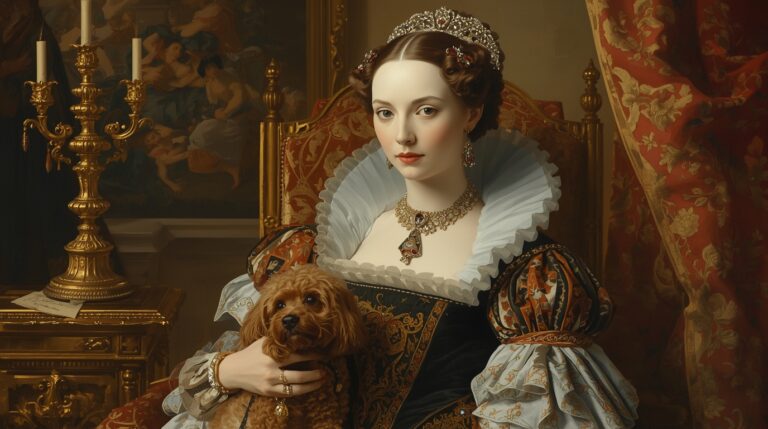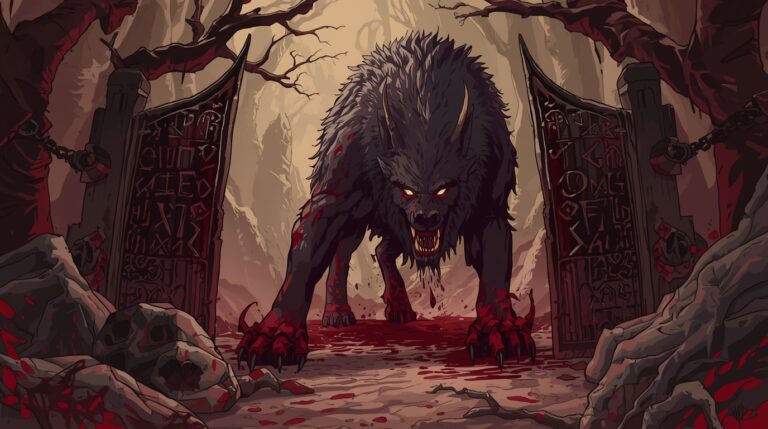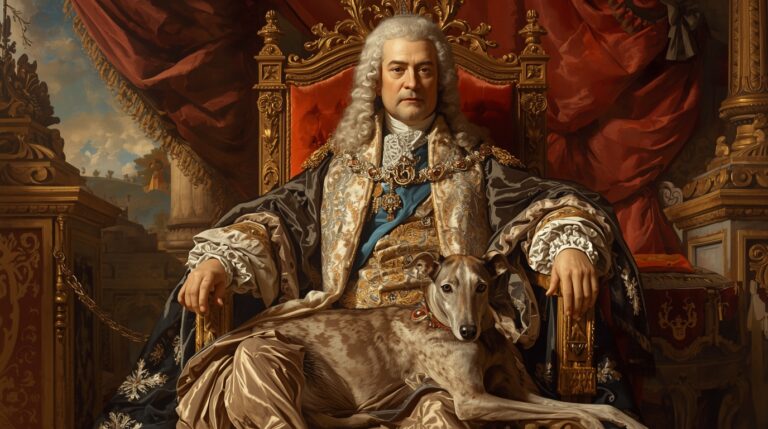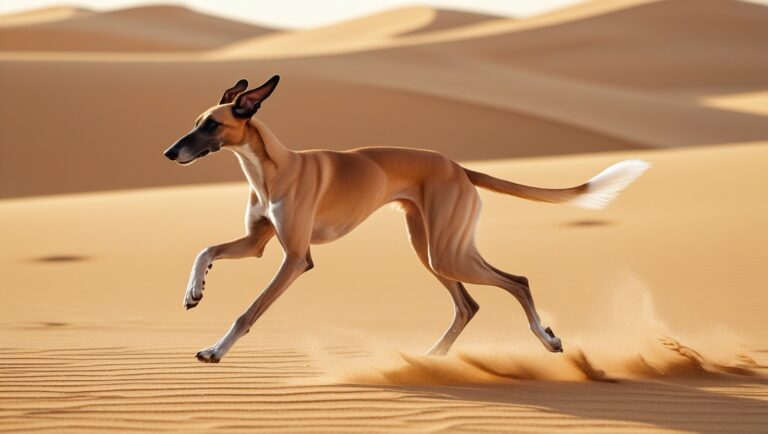Dogs in Egyptian Mythology (Anubis)
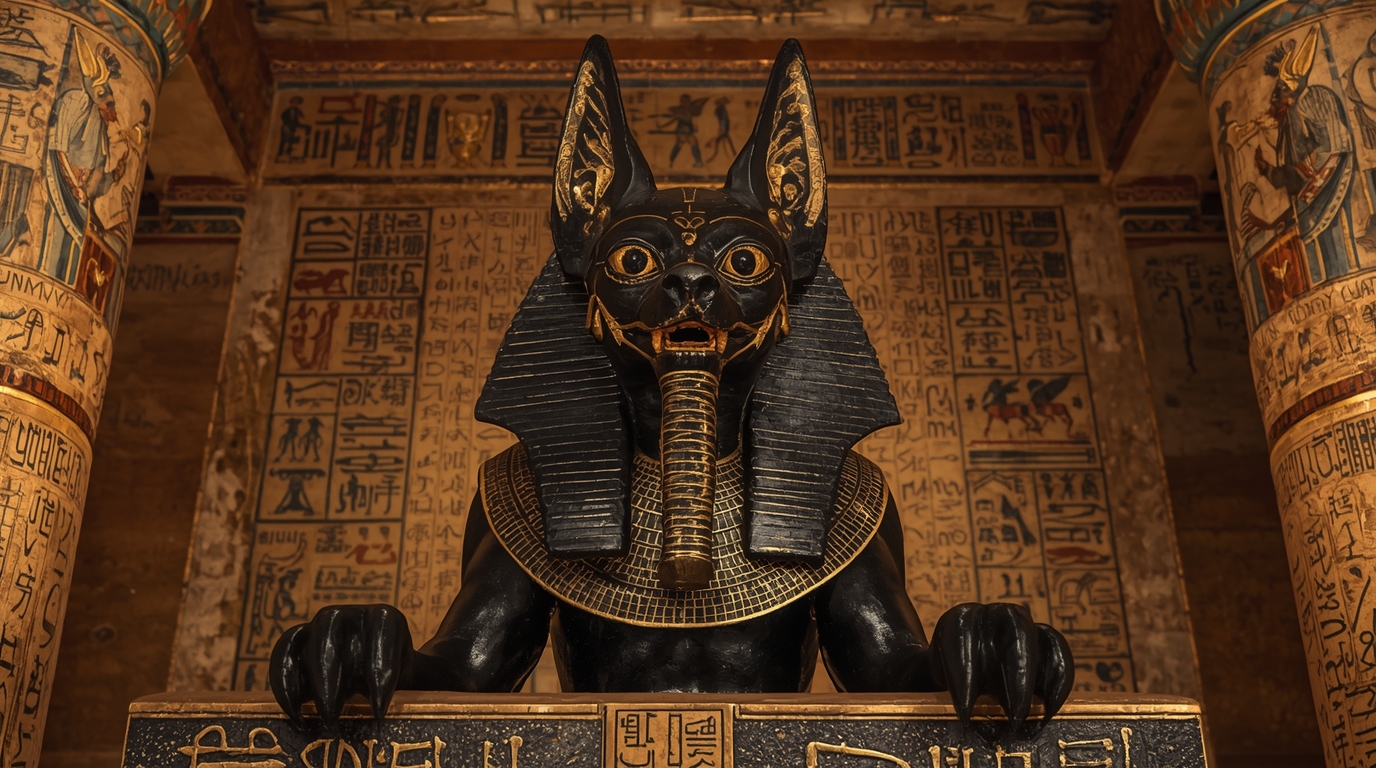
Introduction
Dogs and jackals held profound significance in Egyptian mythology, particularly through their association with Anubis, the iconic jackal-headed god of mummification, death, and the afterlife. In a culture deeply concerned with mortality, burial, and eternal life, the image of the dog became a powerful symbol of protection, transition, and judgment.
From sacred burial rituals to guardian roles in the Duat—the Egyptian underworld—dogs were viewed not merely as animals but as divine agents bridging life and death. Central to this symbolism is Anubis, whose presence in art, temples, and funerary texts persists as one of the most recognizable deities in ancient Egyptian religion.
Symbolism of Dogs and Jackals in Ancient Egypt
The ancient Egyptians lived in close proximity to wild jackals, especially in the desert margins where tombs were often located. Jackals, known for scavenging graves, inspired both fear and reverence. Their behavior was interpreted not just as desecration but as a warning and protective gesture—a creature that revealed vulnerabilities in burial practices.
Over time, this ambiguous relationship evolved into spiritual significance. Jackals became guardians of tombs, their form appropriated in religious iconography to ward off grave robbers and evil spirits. By mythologizing the jackal, Egyptians turned a real-world threat into a divine protector—a pattern reflected in the deification of Anubis.
Who Is Anubis?
Anubis (known as Inpu or Anpu in Egyptian) is one of the most ancient gods in the Egyptian pantheon, predating even Osiris in early funerary traditions. Typically depicted as a black jackal or a man with a jackal head, Anubis represents the transition from life to death, the preservation of the body, and the guidance of the soul.
According to myth, Anubis is the son of Nephthys and Osiris, though in some accounts, Set or Ra is named as his father. Despite varying origin stories, Anubis consistently acts as a protector of the dead and a master of embalming. As Osiris rose to prominence as lord of the dead, Anubis transitioned into a guardian and preparer of the body for Osiris’ judgment.
Anubis’ Role in the Afterlife
In Egyptian cosmology, the afterlife journey began in the Duat, a perilous realm of gods, demons, and challenges. Anubis functioned as a psychopomp, leading the deceased safely through this realm to face the Weighing of the Heart.
In this ceremony, Anubis presided over the scales that measured a deceased person’s heart against the feather of Ma’at—the principle of truth and balance. If the heart was lighter than the feather, the soul could proceed into the afterlife. If heavier, the soul was devoured by Ammit, a monstrous creature part crocodile, lion, and hippo.
Anubis was not the judge—that role belonged to Osiris—but he ensured justice and fairness, securing his place as a symbol of moral equilibrium in the Egyptian spiritual framework.
Anubis as God of Mummification
Beyond his underworld duties, Anubis played a central role in embalming and mummification. As a protector of the corpse, he was invoked during the Opening of the Mouth ceremony, which symbolically restored the senses of the dead. Funerary priests often wore Anubis masks during these rituals to channel the god’s power.
Texts from the Old Kingdom through the Ptolemaic period refer to Anubis as the “He Who Is Upon His Mountain,” emphasizing his role as watcher over necropolises. The black color of his jackal form did not signify evil—it represented the fertile Nile silt and resurrection, reinforcing his role in bodily preservation and rebirth.
Anubis in the Book of the Dead
The Book of the Dead, a collection of spells and rituals meant to guide the dead through the afterlife, frequently mentions Anubis. In Spell 125, he oversees the Weighing of the Heart. In other spells, he is called upon to protect the soul, ward off demons, and safeguard the physical body.
Images of Anubis appear alongside magical formulae on tomb walls, sarcophagi, and papyrus scrolls, reinforcing his function as a protector and intermediary. The inclusion of Anubis in these texts was both a spiritual safeguard and a visual invocation of divine power.
Wepwawet: The Opener of Ways
Often confused with Anubis is Wepwawet, another jackal-headed deity whose name means “Opener of the Ways.” While Anubis was associated primarily with funerary rites, Wepwawet had military connotations and was believed to lead armies into battle, clearing paths physically and spiritually.
Over time, their roles overlapped. Wepwawet also appeared in funerary contexts, suggesting a shared or complementary function with Anubis. However, Anubis remained more tightly bound to death rituals, while Wepwawet’s identity was fluid—sometimes a warrior, sometimes a cosmic guide.
Dog Imagery in Tombs and Religious Art
Anubis features prominently in Egyptian religious art, especially in tombs of the New Kingdom. Statues of Anubis were often placed near sarcophagi or within funerary chapels, always painted jet black to signify rebirth and preservation.
Wall paintings show him anointing bodies, overseeing rituals, or standing guard beside the deceased. One of the most famous depictions is from Tutankhamun’s tomb, where a life-size statue of Anubis in full regalia was found guarding the burial chamber. This presence reflected not just myth, but real religious devotion and ritual.
Sacred Cemeteries for Dogs and Jackals
The religious status of dogs extended beyond myth. Archaeologists have discovered mass canine burial sites, particularly at Saqqara and Abydos, where thousands of mummified dogs were found in catacombs. These dogs were likely bred for ritual sacrifice and veneration of Anubis.
Inscriptions and artifacts from these sites indicate that dogs were seen as living representations of Anubis. The act of burying them ritually strengthened the devotee’s spiritual connection to the god and was believed to gain divine favor in both this life and the next.
Priests of Anubis and Ritual Roles
The Cult of Anubis had a structured priesthood, particularly active during the Late Period. Anubis priests performed embalmings, funerary blessings, and protection spells. During the mummification process, these priests would don jackal masks to symbolically transform into the deity, invoking his power.
Their work was considered sacred and necessary for the soul’s journey. As guardians of the dead, Anubis priests held both religious and social prestige, often connected to temple centers like Cynopolis, the “City of the Dog,” which was a major center of Anubis worship.
Regional Worship of Anubis
While Anubis was revered throughout Egypt, his most prominent cult center was Cynopolis, located in the 17th Nome of Upper Egypt. Here, dogs were bred, mummified, and buried as sacred offerings. The city was considered holy ground, where living dogs and jackals roamed freely near temples and cemeteries.
Other important centers included Memphis, where Anubis worship merged with that of Ptah and Osiris, and Thebes, where his presence was invoked in royal burials. Anubis’ worship persisted for over 3,000 years, adapting and absorbing new meanings as dynasties and cultures changed.
Anubis in Greco-Roman Syncretism
As Egypt came under Greek and Roman rule, Anubis was absorbed into Hellenistic theology. The result was Hermanubis, a fusion of Anubis and Hermes, both psychopomps responsible for guiding souls. Hermanubis retained Anubis’ jackal form but adopted the wand and symbols of Hermes, reflecting the cross-cultural exchange in Ptolemaic and Roman Egypt.
Roman writers like Plutarch and Diodorus Siculus referenced Anubis in philosophical and allegorical works, linking him to Stoic cosmology and divine order. Temples dedicated to Anubis were maintained even under Roman emperors, and the god was invoked in magical papyri and Gnostic texts, attesting to his lasting spiritual significance.
Dogs as Protective Spirits in Egyptian Myth
Beyond Anubis, dogs were used in protective amulets, talismanic carvings, and household spells. They were believed to repel evil spirits, assist in healing rituals, and guard against disease. Dog-headed figurines were placed in tombs and homes, often inscribed with hieroglyphic prayers to Anubis or protective spells.
Some spells from the Coffin Texts and Pyramid Texts refer to dog-like creatures as guardians of portals, suggesting a broader cosmological role for dogs in guarding not just tombs but also spiritual thresholds—both within the Duat and in the mortal realm.
also read this Dogs in Mythology, Religion & Folklore
Modern Interpretations of Anubis
Anubis continues to captivate modern audiences. From films like The Mummy to video games like Assassin’s Creed Origins, Anubis is portrayed as a mysterious guardian, often blending myth with creative reinterpretation. In literature and art, he represents death, judgment, and the unknown, often with undertones of protection and order.
He is frequently tattooed, studied in academic circles, and included in modern Neopagan and Kemetic (Egyptian revival) practices. Despite the passing of millennia, Anubis endures as a timeless symbol of the power dogs and jackals hold in the human imagination—guardians of what lies beyond.
Conclusion
Dogs in Egyptian mythology, especially through the figure of Anubis, reflect a civilization deeply invested in the rituals of death, the sanctity of the body, and the continuity of the soul. Whether guarding tombs, weighing hearts, or guiding spirits, these mythological canines embody the profound intersection between the natural and supernatural, the earthly and divine.
Through Anubis, jackals and dogs transcended their desert origins to become symbols of divine justice and eternal protection. Their legacy remains etched in tombs, texts, and the collective memory of one of history’s most enduring civilizations.
